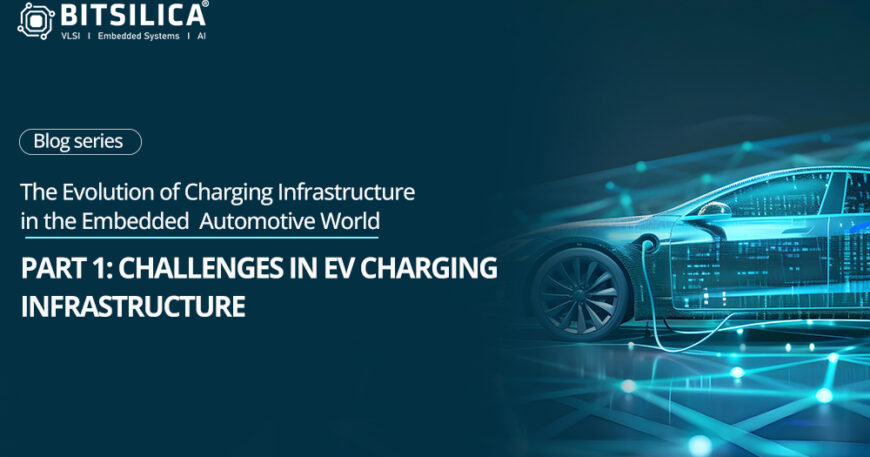The Challenges in EV Charging Infrastructure
The global transition towards electric vehicles (EVs) marks a pivotal shift in the automotive industry. EVs promise significant environmental benefits and a move towards sustainable transportation. However, as the adoption of electric vehicles accelerates, more efficient and reliable charging infrastructure will be required.
In this first part of our blog series, we understand the primary challenges that the EV charging infrastructure faces today. From range anxiety and energy management to cybersecurity concerns, it is crucial to understand these obstacles in order to move towards an electrified future.
Challenges in EV Charging Infrastructure
Range Anxiety and Charging Speed:
Range Anxiety: EV users often worry about running out of power without a charging station when they don’t have access to electricity. As a result of this concern, known as range anxiety, electric vehicles are not widely adopted. By improving charging infrastructure to support high-speed charging, we can help increase the adoption of electric vehicles and mitigate range anxiety.
Charging Speed: The time it takes to charge an EV is considerably longer compared to refuelling a conventional vehicle. This inconvenience can deter potential EV buyers. The longer charging time for electric vehicles compared to refuelling a conventional vehicle is a concern for potential EV buyers due to the inconvenience it can cause in their daily routines. Many people are accustomed to the quick and efficient refuelling process of traditional vehicles, and the prospect of waiting for an extended period to recharge their EVs can be discouraging. Additionally, longer charging times can limit the flexibility and spontaneity of travel, as frequent and lengthy charging stops may be required for longer journeys.
Energy Management and Grid Load:
Integration with Renewable Energy: To make EVs genuinely sustainable, the charging infrastructure must integrate with renewable energy sources like solar and wind. This requires sophisticated energy management systems. We can achieve a sustainable transportation system by integrating EV charging with renewable energy sources like solar and wind. This reduces greenhouse gas emissions associated with charging EVs and promotes the use of clean, renewable energy. Additionally, integrating EV charging with renewable energy sources helps to address concerns about grid load and promotes a more resilient and reliable electrical infrastructure.
Accessibility: The charging stations must be accessible and user-friendly to encourage more people to switch to electric vehicles. The accessibility of charging stations plays a crucial role in increasing electric vehicle adoption. When charging stations are easily accessible and user-friendly, it eliminates the barriers and concerns associated with EV ownership, such as range anxiety and limited charging infrastructure. By ensuring that charging stations are conveniently located and widely available, more people will be encouraged to switch to electric vehicles, contributing to the overall growth and sustainability of the EV market.
Cybersecurity
Some of the key areas we will explore include:
- Fast-Charging Solutions
- Smart Grids and Advanced Energy Management
- Wireless Charging and Battery Swapping
- AI and Predictive Maintenance
- Advanced Microcontrollers and Embedded Systems
- Enhanced Cybersecurity Measures
By exploring these emerging technologies and solutions, we aim to provide insights into the future of EV charging infrastructure and examine how it will be able to meet the needs of a rapidly growing market.
Closing Remarks
The challenges facing the EV charging infrastructure are multifaceted and complex, impacting both the consumer experience and the broader energy grid. Addressing issues such as range anxiety, charging speed, energy management, and cybersecurity is essential for the continued growth of the EV market.
Keep an eye out for our next blog in this series as we go deeper into these exciting developments.





